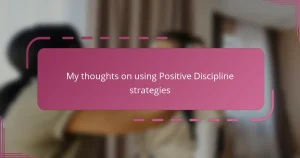Key takeaways
- Attachment parenting focuses on intuitive responsiveness, fostering trust and deep connections between parent and child.
- Key techniques include babywearing, responsive feeding, and gentle sleep coaching, enhancing emotional security and parental intuition.
- Challenges include societal expectations, maintaining personal balance, and managing sleep deprivation, which require trust in one’s instincts.
- Engaging in small daily rituals and being present during ordinary tasks can significantly strengthen the parent-child bond.
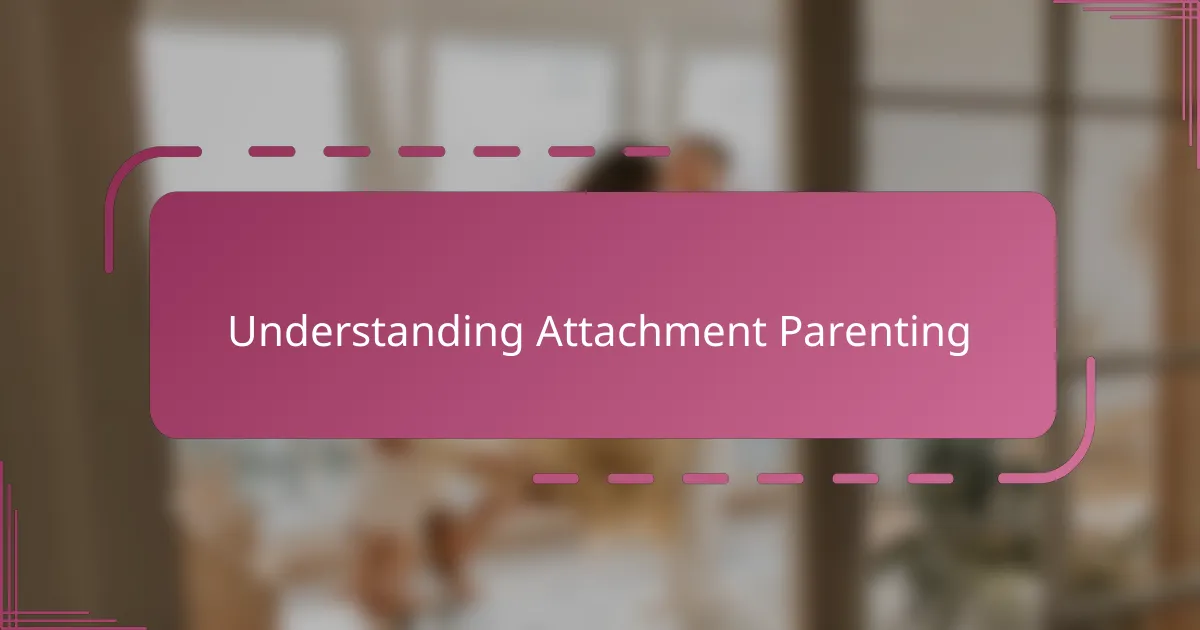
Understanding Attachment Parenting
Attachment parenting, to me, feels like an intuitive dance between parent and child—a way to build trust that lingers long after those early years. Have you ever noticed how a gentle touch or a calm presence can instantly soothe a fussy baby? That’s the heart of this approach: responding attentively to your child’s needs as they arise.
I remember nights when my little one wouldn’t settle without being held close, and although it was exhausting, those moments deepened our connection in ways I hadn’t expected. It made me question how often modern life pulls us away from these simple, yet powerful exchanges.
Isn’t it fascinating how attachment parenting encourages us to slow down and truly listen? It’s less about rigid rules and more about being present, which I believe forms the foundation for a confident and secure child.
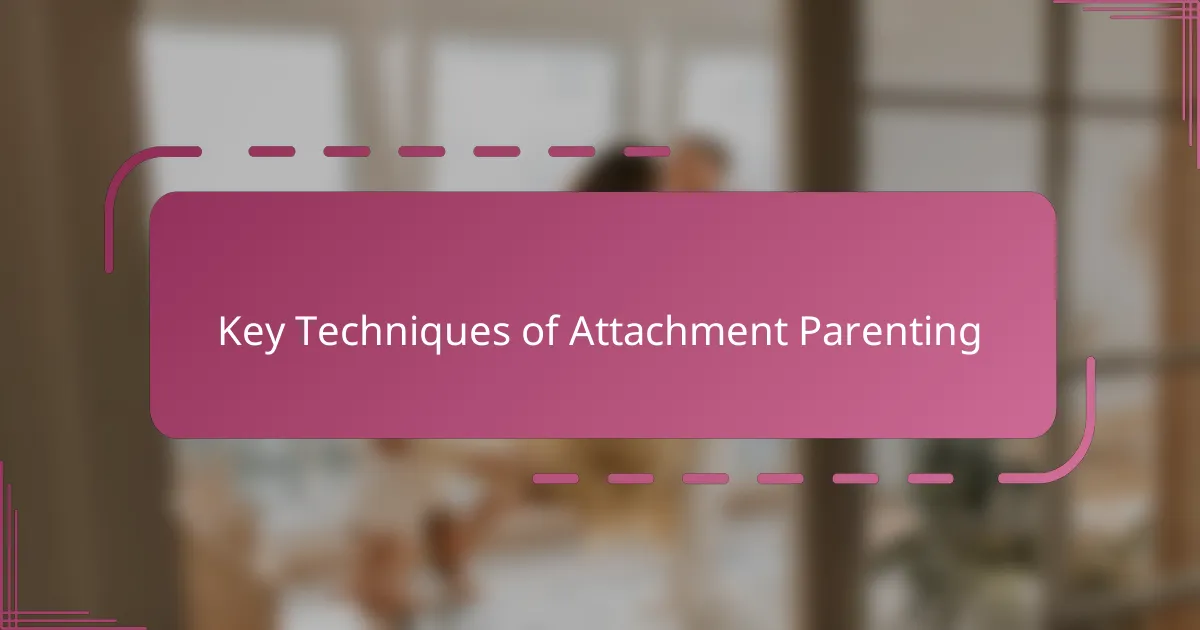
Key Techniques of Attachment Parenting
One key technique I’ve come to appreciate is babywearing. Carrying my baby close not only made errands easier but also seemed to calm her instantly. Have you tried how that closeness can reduce crying and deepen that sense of security between you?
Another technique that truly challenged me was responsive feeding—being attentive to hunger cues rather than the clock. It felt like learning a new language, reading subtle signals instead of relying on schedules. I found this approach sharpened my awareness of her needs, making our bond feel even more attuned.
And then there’s gentle sleep coaching or co-sleeping, which wasn’t easy to navigate at first. Holding my baby through those restless nights made me wonder if I was spoiling her, but it turned out to be a comforting ritual that reassured us both. Isn’t that constant presence what attachment parenting is really about—being there, no matter what?
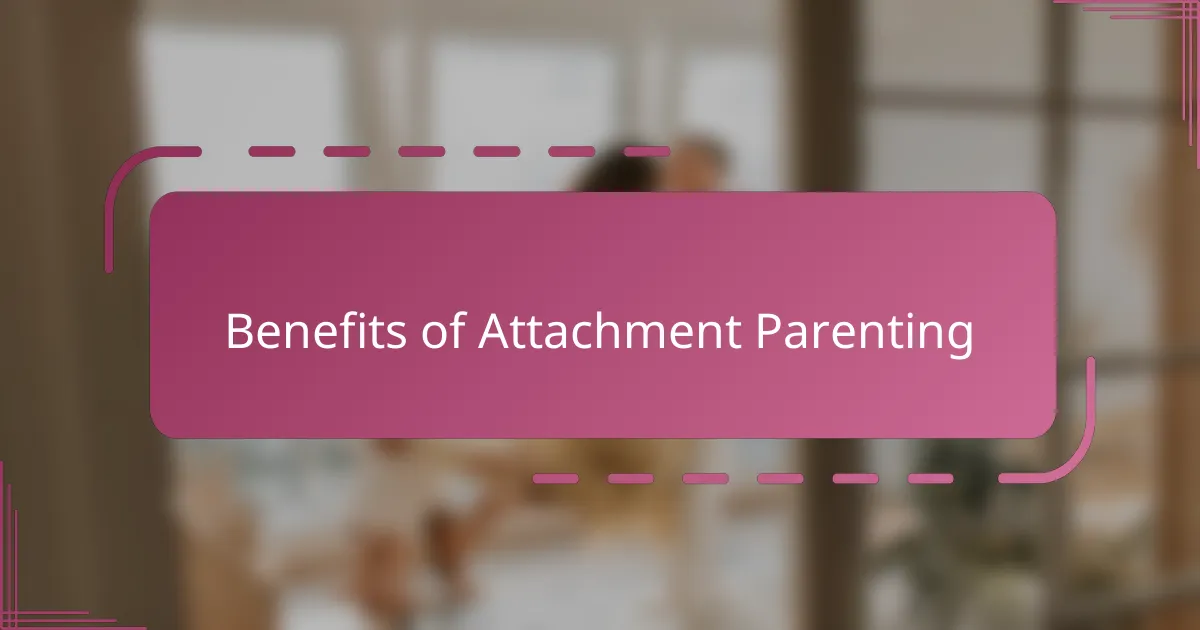
Benefits of Attachment Parenting
One of the biggest benefits I’ve noticed with attachment parenting is the sense of security it builds in my child. When you respond consistently and lovingly, it feels like you’re planting seeds of trust that grow over time. Isn’t it amazing how a secure child seems more willing to explore the world, knowing someone has their back?
I’ve also found that attachment parenting deepens my own intuition as a parent. By tuning in closely to my baby’s cues, I learned to anticipate needs before they became urgent. It’s like having a secret language that makes stressful moments feel a little more manageable.
Beyond the immediate calmness, this approach seems to nurture emotional resilience. Watching my child handle small frustrations with fewer tears makes me think—maybe being so closely connected early on actually strengthens their ability to cope later. Have you seen that kind of growth in your little one, too?
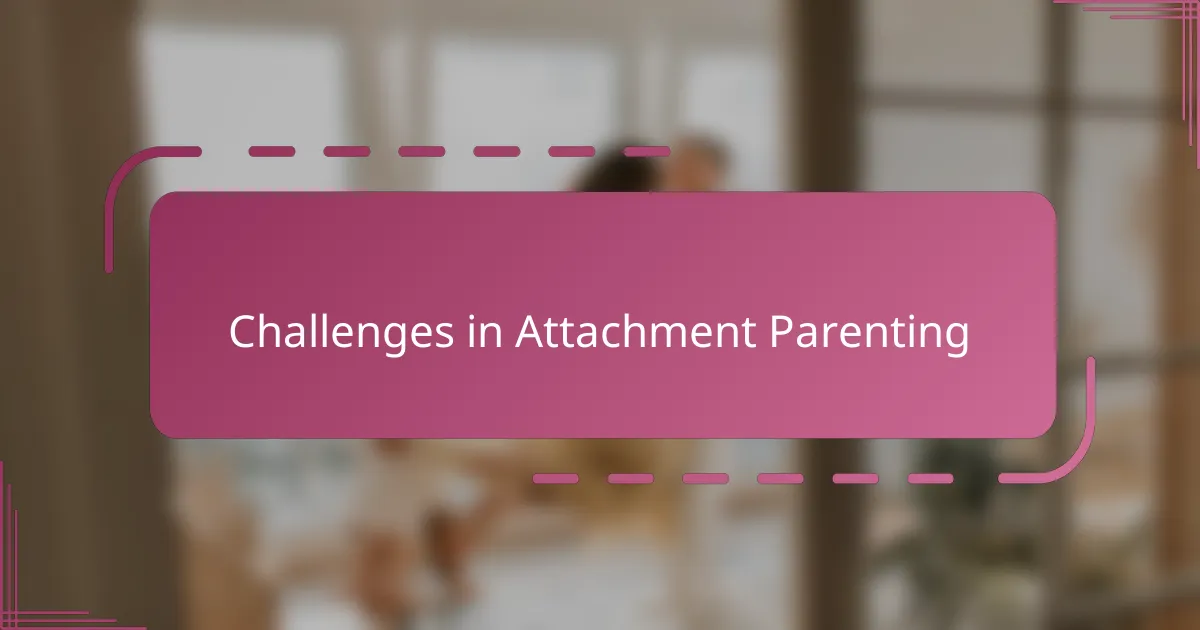
Challenges in Attachment Parenting
Attachment parenting isn’t without its hurdles. I often found myself drained after long days of constant responsiveness, wondering if I could maintain such closeness without losing a bit of myself. Have you ever felt that delicate balance teetering under the weight of endless demands?
One of the biggest challenges for me was navigating societal expectations. Friends and family sometimes questioned my methods, making me second-guess whether I was spoiling or enabling dependency. It made me realize how important it is to trust your own instincts, even when the world seems doubtful.
Sleep deprivation also tested my patience deeply. Nights spent soothing and co-sleeping blurred into mornings, leaving me exhausted yet reluctant to trade those precious moments for a bit more rest. Hasn’t that tension between self-care and child care been one of the hardest parts for you, too?
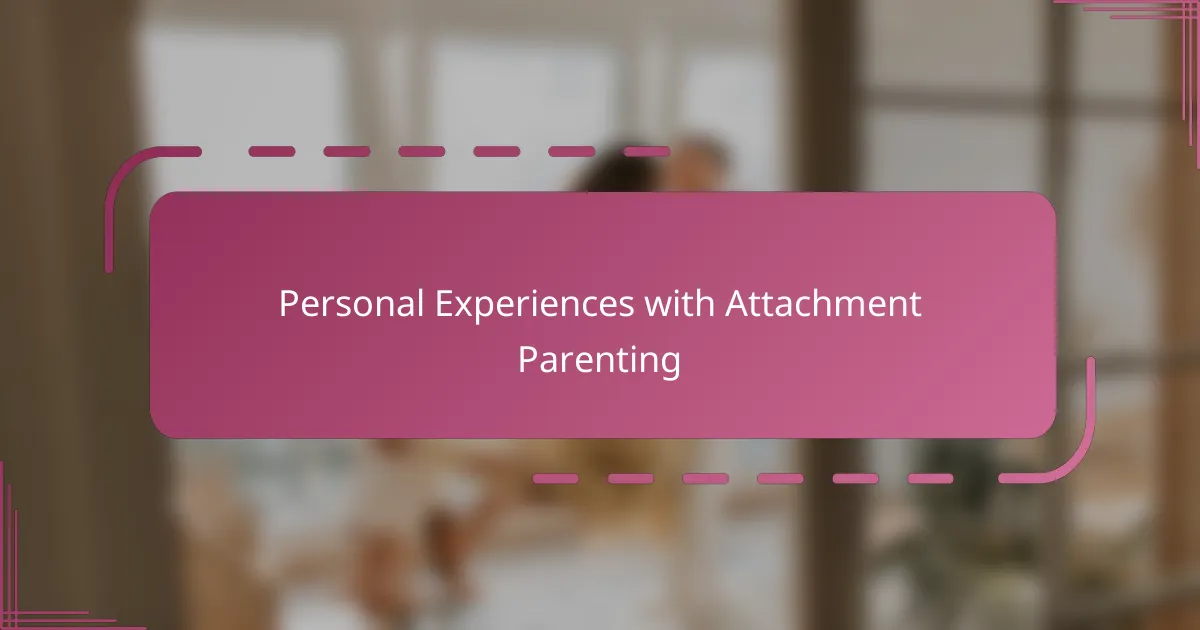
Personal Experiences with Attachment Parenting
There was a time when my toddler suddenly refused to nap alone, and despite my busy schedule, I found myself sitting beside her, holding her hand until she drifted off. That simple act, though small, felt profoundly rewarding—it reminded me how much presence matters. Have you ever noticed how those quiet, shared moments seem to build an unspoken trust?
Sometimes, attachment parenting felt like a constant giving of myself, especially during teething or illness, when my child needed extra cuddles and reassurance. I’ve learned that these intense periods, while tiring, actually strengthened our bond in ways schedules and routines never could. Does it surprise you how giving so much can sometimes bring you even closer?
One vivid memory sticks out: during a particularly challenging week, I questioned if I was doing too much by always responding immediately. Yet, looking back, that responsiveness made my child more secure and calm, which in turn eased my own anxiety. Isn’t it interesting how being there fully can create a peaceful loop for both parent and child?

Practical Parenting Tips Using Attachment Methods
One practical tip I swear by is tuning into your child’s cues before they become obvious cries or fussiness. It’s like learning to read their unique language—a skill that deepened our connection and saved us from many tantrums. Have you noticed how just a little extra attention early on can prevent a meltdown?
Another approach that transformed my daily routine was incorporating babywearing during chores or walks. Carrying my baby close kept her calm and allowed me to stay productive, creating a win-win dynamic. Have you ever felt that soothing closeness while your hands stay free?
Finally, I found that embracing flexibility in sleep routines eased a lot of stress. Rather than forcing strict schedules, gently responding to my child’s sleep needs made nights smoother for both of us. Isn’t it comforting to know that sometimes letting go of strict plans actually brings more peace?
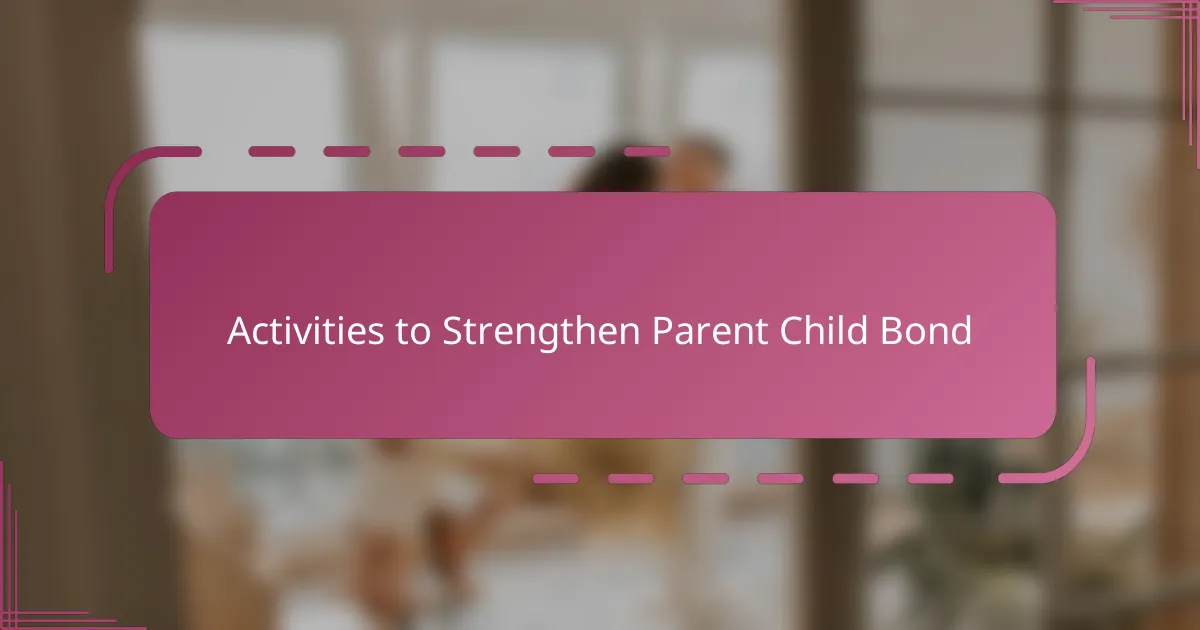
Activities to Strengthen Parent Child Bond
One activity that truly deepened our bond was carving out small daily rituals, like reading a favorite story together before bed. Those moments felt like tiny islands of calm where connection grew naturally. Have you ever noticed how a shared laugh or whispered secret can make your child’s eyes light up with trust?
I also discovered that simple physical activities—like dancing around the living room or a gentle massage—work wonders in building closeness. These tactile experiences create a language beyond words, helping my child feel seen and cherished in ways I hadn’t anticipated. Isn’t it amazing how touch can speak volumes about love?
Sometimes, just being fully present during everyday tasks—whether it’s cooking or tidying up—turned into meaningful opportunities to connect. Slowing down and inviting my child to join in felt less like chores and more like shared adventures, reminding me that bonding often happens in the smallest, most ordinary moments. Have you tried turning routine into quality time?


